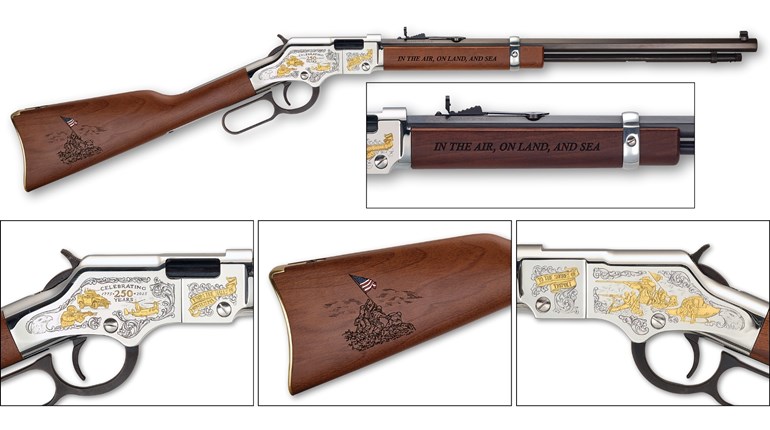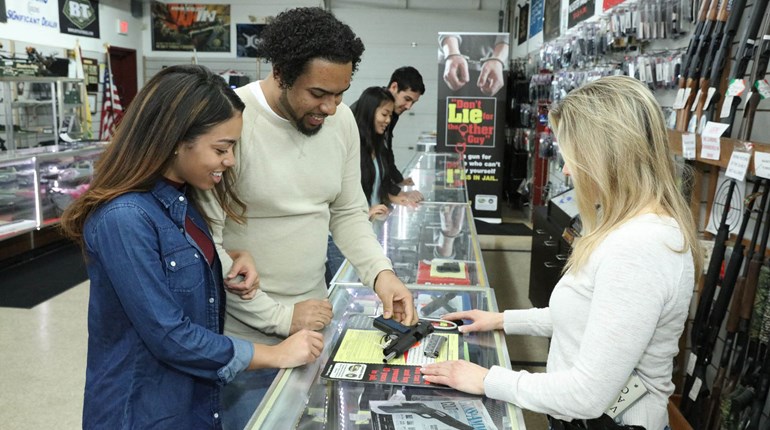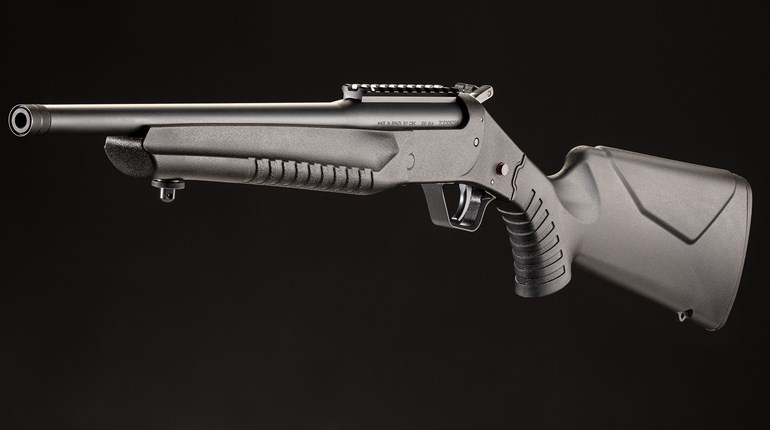
Above: Dale Carpenter coaches during the Creedmoor Cup Team Match. Photo—Matthew Schwartzkopf.
Believe it or not, there really is a “pot of gold” at the end of the rainbow on the Emerald Isle, both literally and figuratively.
Gold in terms of gold medals won by the U.S. team during the 2015 Emerald and Creedmoor Cup team matches held at the Midlands National Shooting Center in central Ireland this past June, the relationship as good as gold between U.S. and Irish competitive shooters, and a golden milestone on the road toward restoration of certain rights to the Irish shooting community.
But before I tell you about how the U.S. F-Class rifle team performed in Ireland this year, a bit of history is appropriate. For you see, history did repeat itself, and in both cases competitive shooting in each of our two countries benefited through two challenges issued 100 years apart.
Above: The Irish took up the author’s 2009 challenge, building a range just west of Tullamore and invited national F-Class teams from the U.S., South Africa, Australia, Canada and England to renew old competitive rivalries. The challenge also allowed the Irish F-Class team to compete internationally, as well as enjoy simple rights so long denied to the Irish people. Photo—Mark Walker.
1873—THE FIRST CHALLENGE
It all began in 1873 when the Irish rifle team under Major Arthur B. Leach won the famed English Wimbledon match over teams from England and Scotland by a score never before registered at any team match held at 800, 900 and 1000 yards. As reported by the American NRA’s first Secretary, General George W. Wingate, “Fired by their success Major Leach published in the New York Herald a challenge, on behalf of the Irish Rifle Association, to the riflemen of America to shoot a match in the autumn of 1874.”
The match was to be held on U.S. soil at the newly constructed Creedmoor Range on Long Island, NY. According to General Wingate, the U.S. team was to be comprised of American riflemen using American manufactured rifles while the Irish team was to perform using rifles made by Rigby of Dublin.
The National Rifle Association of America was newly formed in 1871, and within the organization was the Amateur Rifle Club which accepted the Irish challenge. This was despite the fact the club had never competed at ranges in excess of 500 yards, and the U.S. had no rifles that could compete with the famed Irish Rigby rifles. Thus, long-range rifle competitive shooting was born in the U.S. when the first long-range competition rifle, a breach loading .45 caliber rifle known as the Creedmoor Pattern, was manufactured by the Sharps Rifle Company.
The U.S. team had adopted what was then a highly unorthodox “team doctrine” where competitors relied upon each other to “dope the wind,” as opposed to the “single shooter doctrine” then widely used by European shooters, where each shooter relied upon their own shooting abilities. The U.S. team won their first international competition on the last shot fired.
In 1875, the rivalry continued with the U.S. team traveling to Ireland, again accepting an Irish challenge for a rematch. This rematch was held on a range situated on a beach near Dublin. The U.S. team won, defeating the Irish who remained gracious hosts despite their loss.
Upon conclusion of the match, and after giving “Three Cheers for the Irish,” the U.S. team presented the Irish with a very large and elegant silver trophy crafted by Tiffany’s of New York, which became known as the Creedmoor Cup.
Subsequently, rematches between the Irish and the U.S. took place on a regular basis with the Creedmoor Cup serving as the prize. Unfortunately, the politics of the time eventually evolved into things about which we will not write. The matches ended around 1916 and the Creedmoor Cup disappeared, along with the ability of the Irish to keep and bear arms and ammunition.
MODERN TIMES AND ANOTHER CHALLENGE
Fast forward to the year 2009 to a place called Lodi, WI. I was President of the NRA at the time, visiting the Winnequah Gun Club for the 2009 F-Class rifle national championships. I was invited by the U.S. F-Class Open team to compete in the nationals using a rifle built by Surgeon Rifles of Phoenix, AZ, and Surgeon donated to the U.S. F-Class team to help fund their participation in the upcoming world championships.  Past NRA president John Sigler fires the opening shot at this year’s Creedmoor Cup with a rifle the Irish used in their struggle for independence. Photo—Mark Walker.
Past NRA president John Sigler fires the opening shot at this year’s Creedmoor Cup with a rifle the Irish used in their struggle for independence. Photo—Mark Walker.
After a long day on the range, I returned to the club house where I was greeted by a friend who introduced me to Noel Kelly, Captain of the Irish F-Class team and then-Chairman of the National Rifle Association of Ireland—a very new national organization that had only been in existence since 2000. Mr. Kelly was accompanied by other members of the Irish team.
These fine gentlemen explained that they wanted me, as an F-Class rifleman and president of the National Rifle Association of America, to issue a challenge to the Irish to invite the U.S. F-Class team to come to Ireland to compete for the long-missing Creedmoor Cup. At the time I understood that such a challenge was very important to them but had only a very vague understanding of how it would assist the Irish F-Class competitors.
Subsequently, I did write a letter on behalf of the U.S. F-Class rifle team challenging the Irish to invite us over for a modern version of the Creedmoor Cup match. The Irish took up the challenge, building a range just west of Tullamore and invited the U.S., South Africa, Australia, Canada and England to renew old competitive rivalries. The U.S. accepted the invitation, and the first modern version of the Emerald Matches and the Creedmoor Cup were held in 2011. Thus, a new tradition was born through the renewal of an old and venerable tradition.
CREEDMOOR AND THE EMERALD MATCHES CIRCA 2015
I was privileged to participate in the 2015 Emerald Matches and Creedmoor Cup as a firing member of the U.S. F-Class Open Rifle Team.
Below: The (left) Irish and (right) U.S. F-Class rifle teams. Photo—Matthew Schwartzkopf.

The competition began with matches fired at 1100 and 1200 yards. The format for this match is somewhat unique in that each yard line serves as a “stage” rather than a match, and the aggregate of the two yard line scores qualifies the top ten shooters in both F-Open and F-T/R for the shoot-off. In other words, it doesn’t matter whether you win or lose, only that you make the shoot-off.
The next three days were devoted to the Emerald Matches, with two days devoted to individuals shooting at 800, 900, and 1000 yards followed by a four-person team match at the same distances the next day.
The last two days were devoted to the Creedmoor Cup team match—the real reason for the challenge.
That old Irish wind blew, and it changed, and it switched, it fishtailed and then switched back again, and it did everything it could to confound and confuse U.S. team coaches and long-range shooting experts Michelle Gallagher, Nancy Tompkins, Mark Walker, Dale Carpenter and Jim Crofts, but it couldn’t keep the U.S. 16-man Creedmoor Cup team from defeating the Irish, once again. Thank you coaches!
By then, the Irish were our friends and shooting companions so at the very end of the match, the U.S. team gave a loud and resounding “Three Cheers for the Irish!” and thanked them for their friendship, their gracious hospitality, a wonderful shooting venue and for the opportunity to continue a great U.S./Irish tradition.
Irish team leader John Paul Craven described to the crowd how my 2009 challenge to NRAI Chairman Noel Kelly had resulted in the Irish being given the ability to build a range, compete at a high level on the international scene, and to enjoy simple rights so long denied to the Irish people. Irish team shooters compete at the 2015. The leader of the Irish Team is John Paul Craven. Photo—Mark Walker.
Irish team shooters compete at the 2015. The leader of the Irish Team is John Paul Craven. Photo—Mark Walker.
Yes, it was an emotional end to a very wonderful experience—because for the very first time I came to fully realize how much my 2009 challenge had accomplished in helping to restore a modicum of firearms freedom to the law-abiding competitive shooters of Ireland. It was quite humbling to hear Mr. Craven’s words and to understand that a single, rather simple letter like mine could do so much to positively affect the firearms rights of an entire nation.
To the Irish, that letter was “a pot of gold at the end of the rainbow.”
2015 EMERALD MATCHES RESULTS
SSUSA thanks NRA past president John Sigler for taking the time to write this article.



































